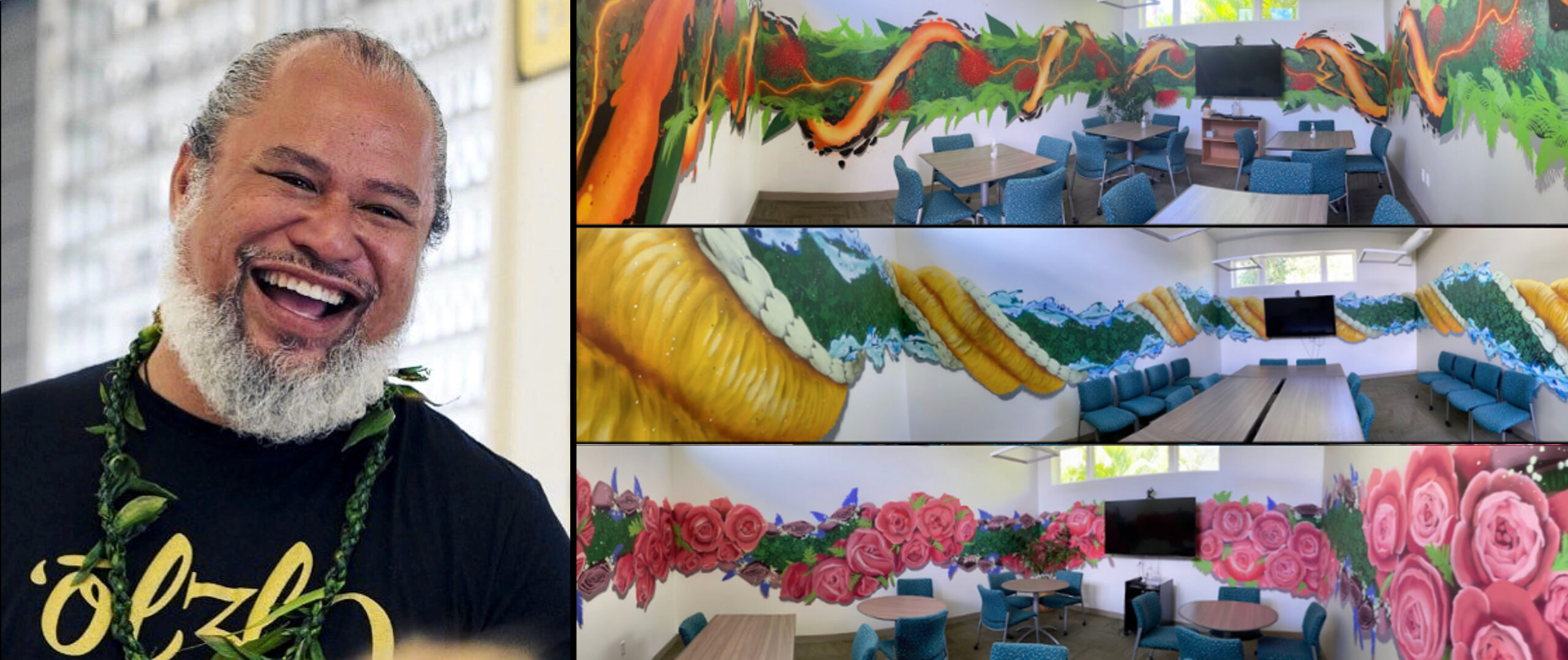
Lei Murals Decorate Hale Kipa Conference Rooms
Vibrantly-hued floral murals now adorn the walls of the Hawai‘i, Maui, and O‘ahu conference rooms at Hale Kipa’s headquarters in ʻEwa Beach.
The murals are the work of local artist, John “Prime” Hina. Each resembles a lei encircling the room in an explosion of color. Prime used each island’s official flower as his inspiration.
The murals are the culmination of discussions that Prime and Hale Kipa President CEO Venus Kauʻiokawēkiu Rosete-Medeiros began a few years ago.
“Mahalo to Venus for sharing her vision and allowing Prime to give life to where we live and work through the lei ‘A‘i of our island homes!” said Melva Goto, Hale Kipa’s human resources manager.
Born in American Samoa and raised in Honolulu, Prime started drawing as a child and “tagging” during the local hip-hop scene in the 1980s. In the 1990s, he learned airbrushing and then returned to his painting roots.
In 2006, Prime founded 808 Urban, which began as a backyard project mentoring youth through urban arts and cultural education. After 10 years heading the organization, which has created over 1,000 large-scale mural projects throughout the Hawaiian Islands and around the world, he transferred its day-to-day operations to two of his students who still run it today.
Since 2011, Prime has focused his art on Hawaiian heritage. Most recently, he is using leis to educate residents and visitors about the state’s rich history.
The Hawai‘i mural represents rebirth and resilience. The lei is studded with the spiky red ʻōhiʻa lehua flower, which thrives in a variety of conditions. It is encircled with glowing lava because Native Hawaiians believe volcanic eruptions are how the earth is reborn.
The Maui mural features the bright pink lokelani rose and the greenery of the purple ti leaf, a hybrid. It represents Hawai‘i’s diverse community.
The O‘ahu room’s mural includes a lush green lei, interwoven with another floral lei made of the yellow ʻilima flower. It represents O‘ahu’s wealth of natural resources. A border around the edge is colored in two shades of blue to represent fresh and salt water, which come together to form the nutrient-rich water of this island.
The Kaua‘i mural is still in the works, but Prime said it may incorporate the island’s salt beds and emphasize the importance of learning from the past and looking to the future.
“When I create a mural, I am feeding people different foods for thought, so from far way you see a lei, but then you see black next to the yellow, and then when you go closer you see handprints,” he said.
Prime also incorporated handprints from youth who participate in Hale Kipa’s programs.
“It’s pretty crazy how we are all leaving our DNA in an art piece for generations to enjoy,” said one of the youths who contributed a handprint.



